frequently seen as simply a sand destination, Tunisia has a bucketful of surprising sightseer lodestones and effects to do for those that adventure off the flaxen props.
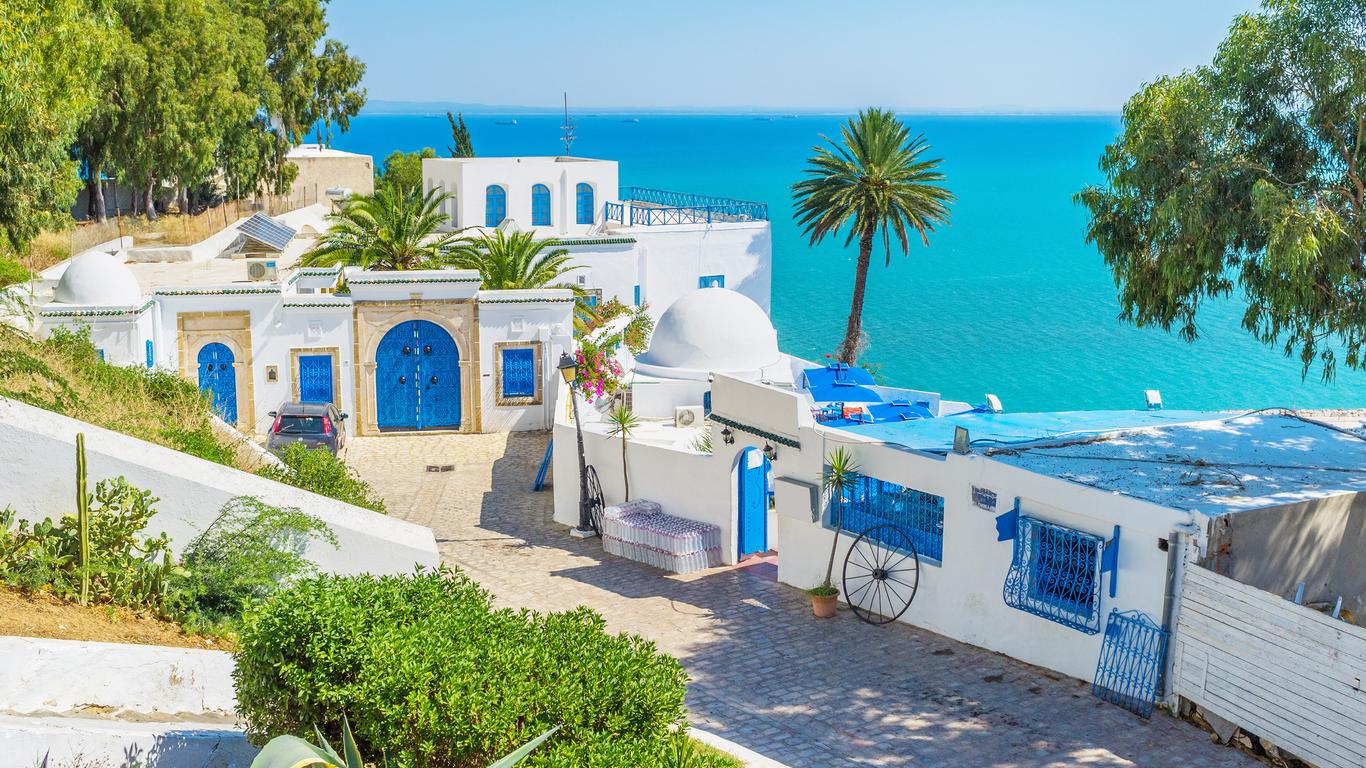
This package contains a condensed version of North Africa.
There are alleyways of light-washed houses and crowded souk thoroughfares to explore in the metropolises; ancient remains to discover out in the country; and the vast desert breadth of the Sahara to the south with its broad stacks, scraggy mountains, and hidden, win-tree- filled oases.
Tunisia was Rome's gut, and the artistic riches the Romans left before are more than enough reasons to visit. But the history of Arab Conglomerates has also bestowed the country with some of the region's most beautiful exemplifications of Islamic armature.
When you've raised your neck at Kairouan's minarets and played prizefighter at El Djem, it's time to head into the Sahara to test the raw, empty beauty of the desert.
The sun-soaked strands of the Mediterranean bank, fringed by triumphs and lapped by gentle swells, will still be staying for you when you get back.
Discover where to go and what to see in this different country with our list of the top sightseer lodestones and places to visit in Tunisia.
1. El Djem Amphitheater
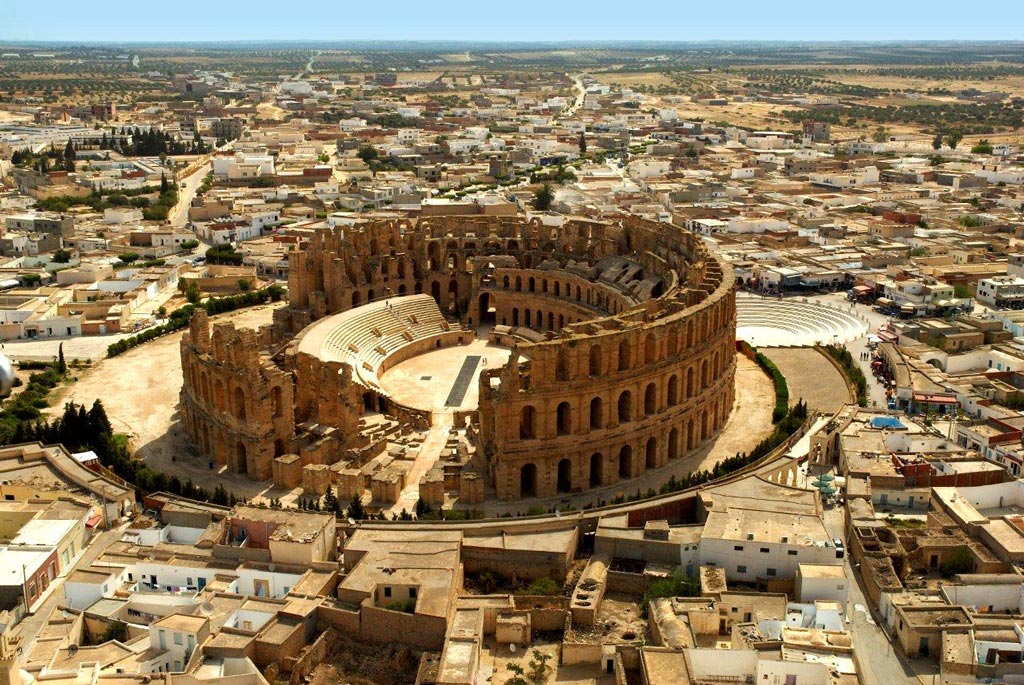
The walls of the potent Roman theater of El Djem stunt the girding ultramodern city.
This incredibly well-saved Roman relic is Tunisia's big sightseeing highlight, one of the most popular effects to do on day passages from the littoral resorts, and one of the most stylish exemplifications of theater armature left standing in the world.
The monumental bulk of the walls memorializes Rome's formerly- potent grip across North Africa.
You can still walk the corridors under the arena, just like the pugilists did. Or, climb up to the top seating categories and sit gaping across the arena, imagining the battles that took place below.
2. Djerba

still, also the islet of Djerba checks all the right boxes If you are looking for a picture-perfect sand escape.
The islet city of Houmt Souk is the main point of interest off the sand, with an old city quarter that's a muddle of whitewashed houses.
Houmt Souk's shopping is a magnet in itself, with a plenitude of handcraft merchandisers for browsing and dealing openings off the sand.
But it's those flaxen strips of oceanfront out of the city that is the islet's most popular highlight. Pristine and trimmed by date triumphs, the strands are relaxing, get- down- from- it- all settings where summer daydreams are made.
3. Carthage

Once Rome's major rival, Carthage was the megacity of the seafaring Phoenicians ever monumentalized in the Punic Wars.
The atmospheric remains of this ancient city now sit beside the ocean amid the cities of Tunis, a warning that indeed the topmost metropolises can be reduced to debris.
The remains are expansive but spread out, and if you've been lucky enough to visit ancient megacity spots similar to Ephesus in Turkey or Volubilis in Morocco, which are well-saved, Carthage can feel relatively underwhelming at first.
But these UNESCO World- Heritage-listed remnants are monstrously important historically, and any sightseer interested in North Africa's ancient history should not miss a visit then.
4. The National Bardo Museum

Indeednon-museum suckers can not fail to be impressed at the massive haul of beautiful mosaics displayed inside the Bardo.
This is one of North Africa's top galleries and houses one of the world's most important mosaic collections, all curated beautifully.
It's a show of the glowing, intricate art of the Roman and complicated ages, with pieces cherry-picked from every major archaeological point in Tunisia.
still, Tunis, this gallery should be high up on your to-do list, If you only have one day in Tunisia's capital.
5. Sidi Bou Said

Incredibly cute, and astonishingly photogenic, Sidi Bou Said is a clifftop villa of petite confines that feel to have fallen off an artist's oil.
Commonly, artists have recognized this little village, now a high-class exurb of the capital Tunis, for decades.
The whitewashed alleyways, wrought-iron window frames, and various blue doors are Tunisian vill armature at their finest, while the Mediterranean background is the cherry on top.
This is a place to while down a lazy autumn, simply soaking up the laid-back atmosphere and perhaps indulging in a spot of shopping at one of the numerous original handwork and handcraft booths.
6. Grand Erg Oriental
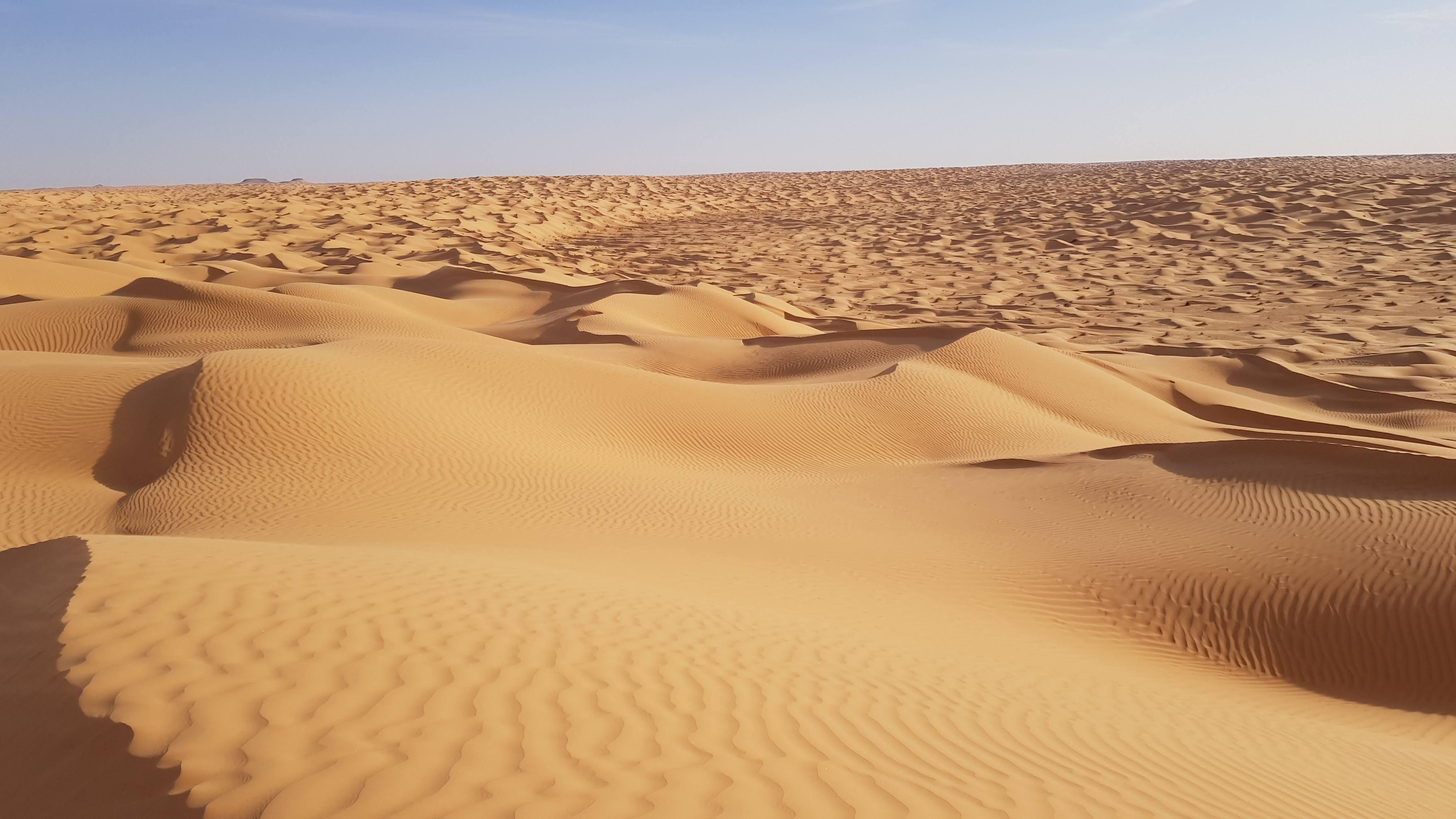
Tunisia's vast Sahara covers much of the country's innards, and the most beautiful corner of the desert is the field of beach stacks known as the Grand Erg Oriental.
These poetically beautiful stacks are a surreal and gorgeous geography of huge swells, shaped by the ever-shifting desert beach.
For numerous callers, this is an adventure playground for riding drift strollers and camel journeys, but nothing tops the simple pleasure of sitting atop one of these mammoth beach mountains and watching the sunset over the Sahara.
The nearest center is the desert city of Douz, from where you can organize camel, hiking, and 4WD excursions and multi-day passages to the stacks.
7. Bulla Regia
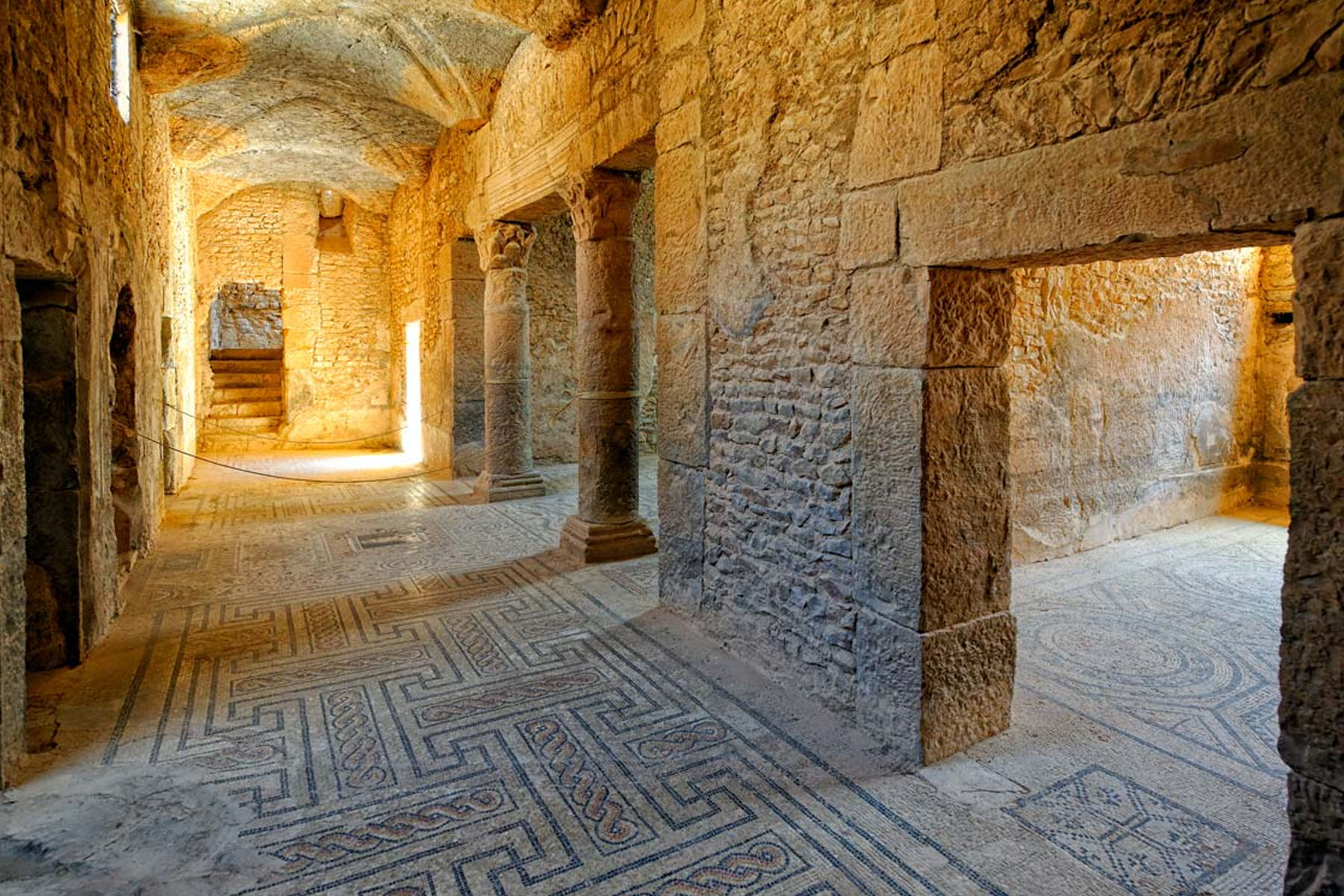
Tunisia has no deficit of Roman remains, but Bulla Regia near Tabarka is the country's most intriguing and interesting point.
Then, the Roman occupants fared with the harsh summer climate by ingeniously erecting their estates underground, which has left the megacity houses an incredibly well-saved moment.
For history suckers, this is a unique occasion to walk through factual Roman houses, with their walls still complete, and with some of the extensive bottom mosaics still in situ. It's a regard of the domestic life of the ancient world that you frequently do not see.
8. Kairouan

With kirks, madrassas, and sepultures aplenty, Kairouan has further than its fair share of monuments as the fourth most important megacity for those of the Muslim faith.
The Arabic armature then's genuinely inspiring, and the skyline is full of skinny minarets and big polls. But it's presumably the aft alleys of the megacity's medina that steal the show.
With narrow, maze- suchlike lanes lined with worsening various houses, Kairouan's old city has an alluring, misplaced-in-time atmosphere that's a true highlight of a visit then.
9. Sousse Medina
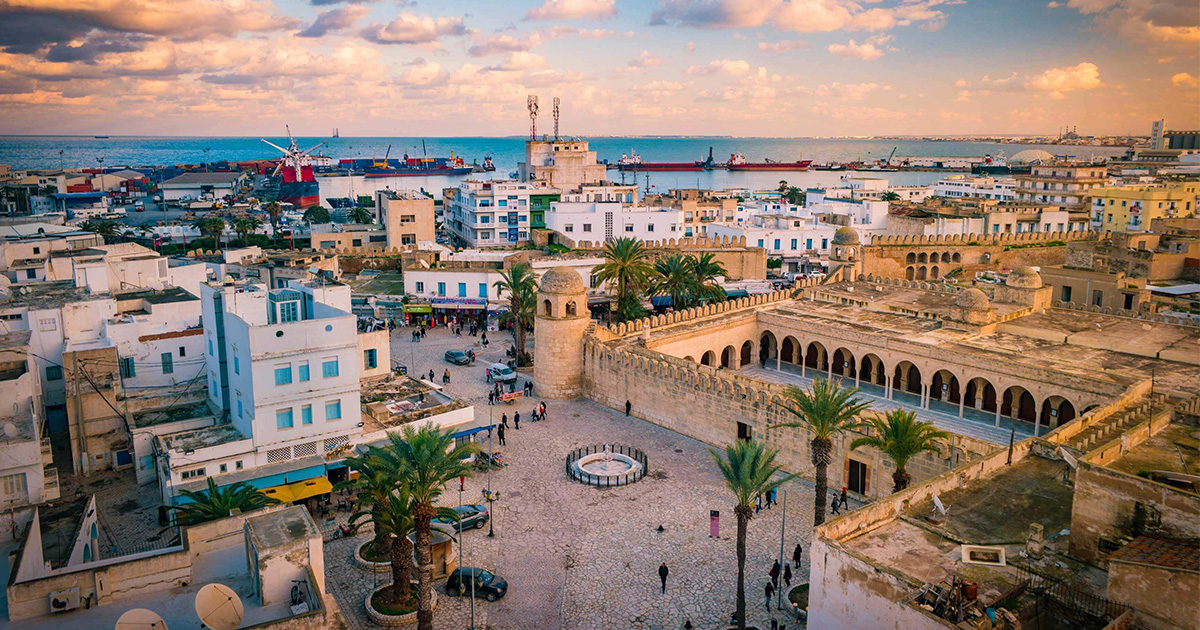
Overlooked by the potent bastions of the ribat and bastion, the medina in Sousse just begs to be explored.
This lovely old city quarter is a maze of looping lanes, rimmed by whitewashed houses, and a shopping paradise with a tempting selection of pottery, leatherwork, and metalwork on display.
Down from the booths along the bustling souk thoroughfares, the quiet and rambling back alleys, dusted in white and blue, are a fascinating place to dive in and sample original life.
10. Chott el Djerid
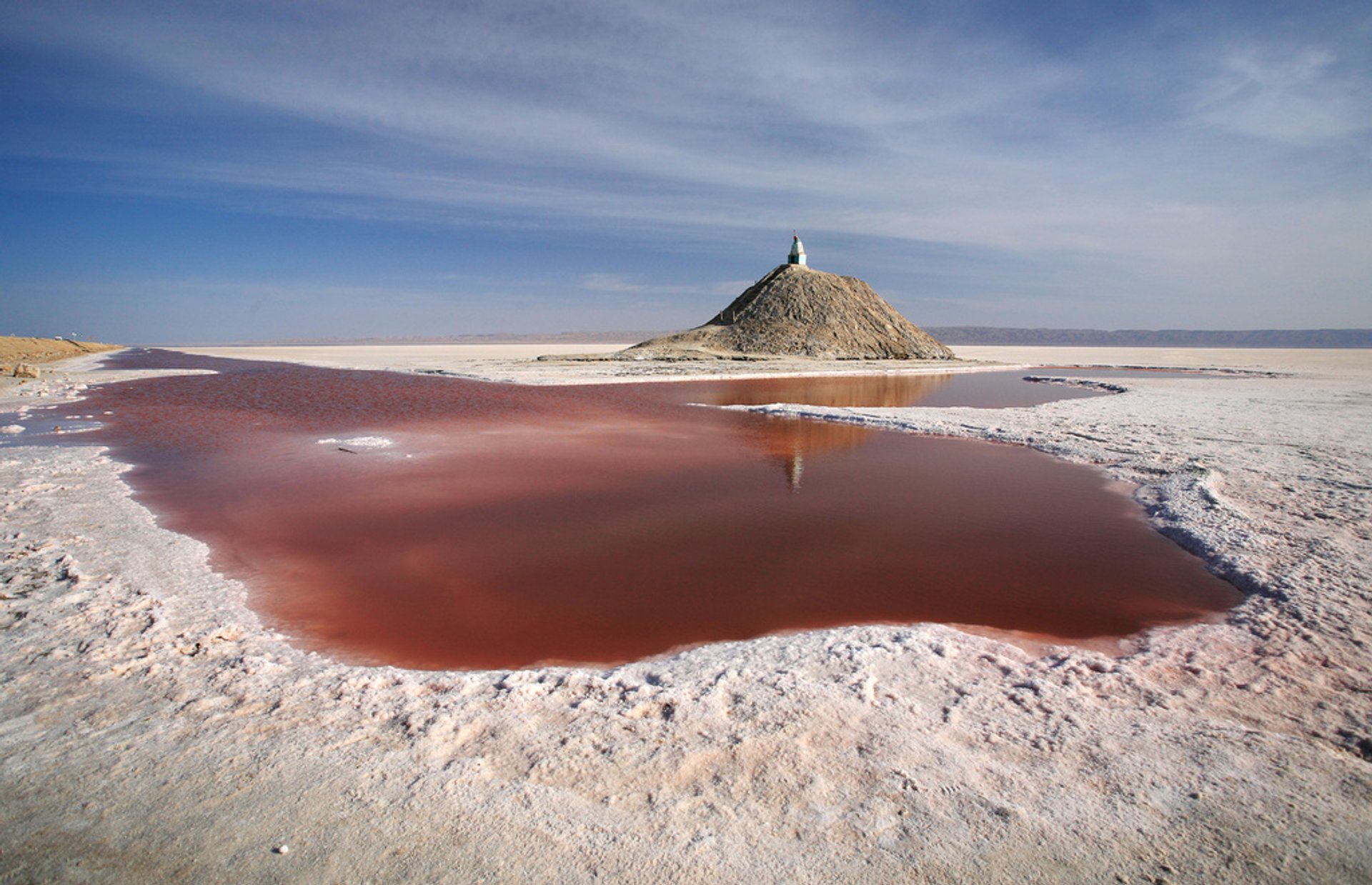
This sprawling swab visage( most fluently reached on a day trip from the desert city of Tozeur) is a desolate and unearthly scene that wows all who visit with its stark and brutal beauty.
The decor then depends on the season you visit.
In summer, the moonscape surroundings of the Chott el Djerid are a storybook outlook brought to life, filled with shimmering mirages on the horizon and jigsaw mystification pieces of blindingly white, cracked land under the bottom.
During downtime, however, the receptacle incompletely fills with water, creating a crazy lake amid the desolate girding desert plains.
A sightseeing trip then proves that nature produces important weirder geographies than you could ever imagine.
11. Hammamet

Hammamet is each about the sand. This laid-back city on the Cap Bon Peninsula is Tunisia's top sun and- ocean resort, devoted to easygoing sand recesses.
The city itself, with its suitable white structures set beside a bright blue ocean, has packets of Mediterranean charm, which woos all who come to sunbathe on the soft, white beach.
For numerous who come then, off-the-sand hobbies total up to nothing further emphatic than gentle ambles in the medina( old city) and a spot of shopping in the restored old city souks.
It's a no-stress kind of place that sums up the pleasures of Tunisia in one enough package.
12. Dougga

fluently reached on a day trip from both the Tunisian capital of Tunis and the northern sand city of Tabarka, Dougga is one of the most important Roman spots in North Africa.
The point is recognized by trippers both for the well-saved state of its main monuments and its tranquil pastoral setting amid rolling country.
It may feel far off the main routes moment, but this extensive, hilltop point was formerly a thriving city, first settled in the 6th century BCE and moment containing remnants leftover from all its major literal ages, from Berber and Punic to Roman and intricate.
The Roman- period remains then are the grandest of Dougga's monuments.
Come then to respect the Roman Theater, Forum, and multitudinous tabernacles with their pillars still raised in place but do not forget to also explore the multitudinous bath complexes and remains of estates.
13. Tunis Medina
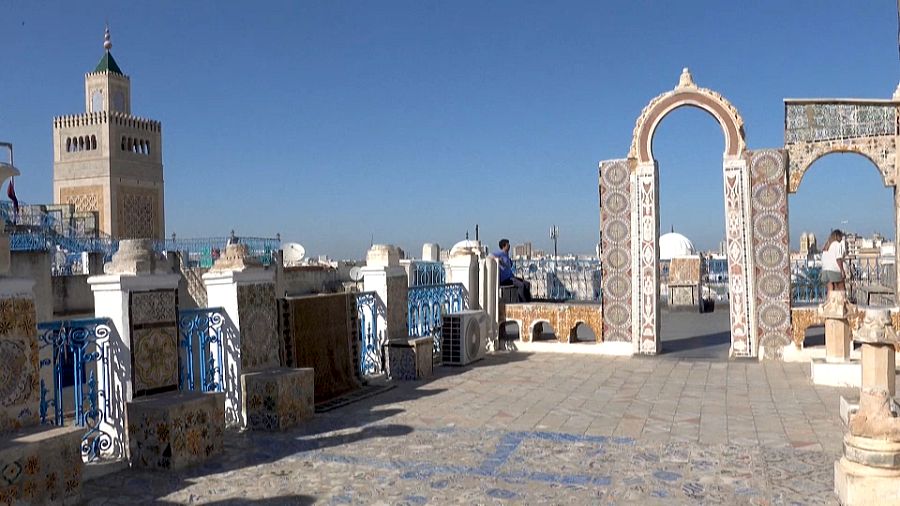
Although Tunisia's capital is substantially visited to view the two major sightseer lodestones of Carthage and the Bardo Museum, the medina quarter of central Tunis is well worth spending a redundant night in the megacity for.
The winding alleys of this old city neighborhood, with their souks( shopping thoroughfares), kirks, and monuments, are delightful to explore.
Do not miss visiting the rooftop of the Umayyad- period Olive Tree Mosque, the medina's most notorious corner, while wandering the medina, and make sure to seek out the clutch of small galleries and restored cars ( medina palaces) hidden within the narrow lanes. However, Dar Hussein Palace is the top pick, If you are short on time.
14. Tozeur

Tozeur is a desert oasis city, sitting in the country's southeast. For numerous callers, it's a practical base for the sightseer lodestones of the Sahara with the chott el djerid swab kissers, beach drifts lookouts, and the oases of Tamerza and Chebika all within day-tripping distance from the city.
Tozeur city is a magnet within itself, however, rimmed by vast date-win auditoriums and home to an intriguing medina quarter brimming with exemplifications of the city's traditional ornamental slipup armature.
Although it's a long trip across a stark desert table to get then( Tozeur is 211 kilometers west of the littoral megacity of Gabes), it's well worth it for the laid-back desert village atmosphere and the loot of Sahara lodestones to explore on its doorstep.
15. Matmata

This Berber vill, with its caveman casing, was made notorious when one of the residences( the Hotel Sidi Driss) was used as a position during the filming of the original Star Wars movie.
Matmata's traditional caveman-style casing is its main magnet. To escape the extreme heat of the area's thirsty table, locals dug deep into the ground, digging a large indirect hole below the face, which would act as a yard, and burrowed into the hole walls to riddle out delve apartments for their living spaces.
Moment, some of the houses are open for visits and give accommodation for trippers who want to witness a night of delve-living.
Matmata is in south central Tunisia, 43 kilometers southeast of Gabes and 108 kilometers northwest of Medicine.
16. Ribat of Monastir
One of Tunisia's most recognizable monuments, the Ribat of Monastir was the foremost fort erected in Tunisia during the 8th- century Abbasid subjection, and one of the foremost in the wholeness of North Africa.
This ocean-facing fort is an exceptional illustration of the medieval protective armature, with its main features of high crenelated walls, watchtowers, and internal yards.
For numerous callers, the ribat is the most notorious moment because of its use as a film position during the mid-20th century, including its starring part in Monty Python's cult classic Life of Brian.
As Monastir is only 23 kilometers southwest of Sousse, the ribat is fluently visited on a day trip from the megacity.
17. Ancient Sufetula

The Roman remains of Sufetula in the small city of Sbeitla need to be put in the way to attract the sightseer crowds, but it's well worth making the trip.
Known for its exceptionally well-saved Roman Forum structure and a large number of saved Roman-period public structures, including a triumphal bow, shared bath, and tabernacles, Sufetula is one of the stylish places to visit in Tunisia to imagine the Roman world.
innovated by the Roman Emperor Vespasian, Sufetula prospered due to its civilization of olives for the conglomerate. latterly, during the intricate period, it also enjoyed further significance in getting a bishopric.
The moment archaeological point sits right on the northern edge of ultramodern Sbeitla city in central Tunisia. There is only a sprinkle of accommodation choices in the city, but it's possible to day trip to Sbeitla from Kairouan, 107 kilometers to the northwest.


0 Comments